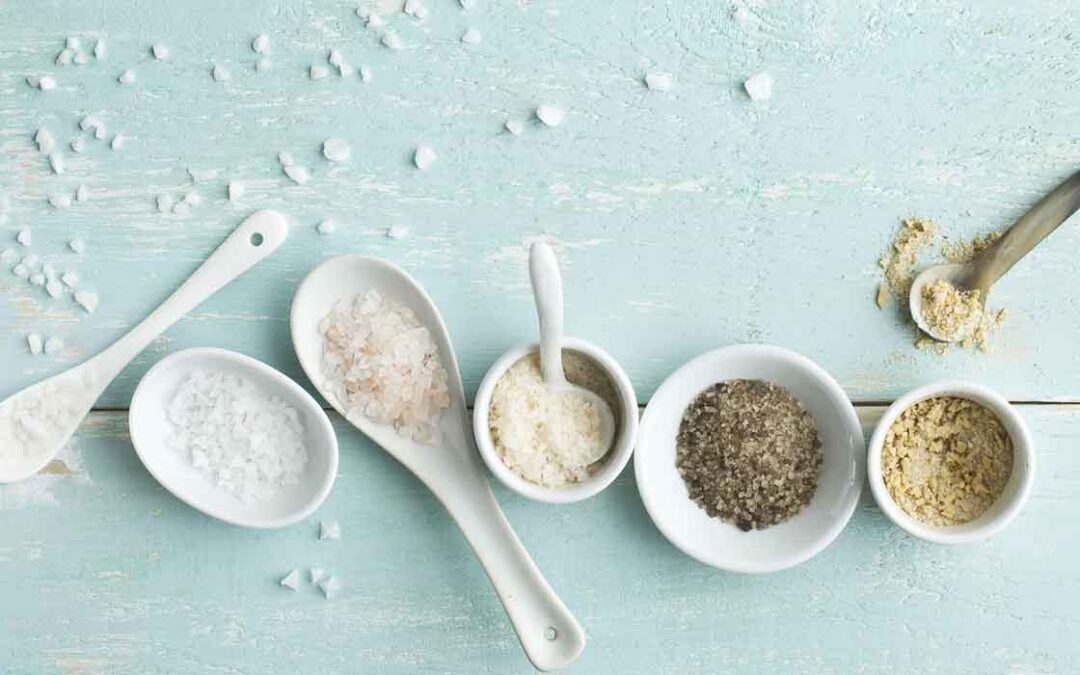Kosher Salt – Table Salt – Sea Salt – Himalayan Salt
Salt is one of the most essential and common ingredients used to cook food. Salt helps in making food tastier by adding a salty flavor to the cuisines and dishes. Without salt, your food might be tasteless or unappetizing. Although there are many different varieties of salt available across the world. The most common types of salts include Kosher Salt, Table Salt, Sea Salt, and Himalayan Salt. However, the texture, flavor, and nutrition value of all these salts are different from one another. Thus, we will check out the difference between all these salt types, in terms of nutritional profile and health benefits.

Before we go into the details, let’s know some important facts about salts.
- Salt is a mineral found in the crystal form, comprising of two elements i.e. Sodium (Na) and Chloride (Cl).
- Both Sodium and Chloride help in improving brain health by stimulating electric impulses through nerves.
- Fundamentally, salt is obtained from salt mines or through the process of evaporation of sea or other mineral-filled waters.
- Too much salt intake can cause high BP due to water retention by the body for flushing out excess sodium.
Himalayan Salt

Himalayan salt is a pinkish colored salt obtained from the Khewra Salt Mine of Pakistan. Due to the presence of iron oxide, the appearance of this salt is pinkish. This salt type is known to contain calcium, iron, magnesium, and potassium in little quantity. However, the sodium content of Himalayan pink salt is a bit lower than table salt. While many people believe this salt to be better tasting, yet it’s only unusual trait is its color.
Himalayan Salt Benefits
Here are some of the potential health benefits of Himalayan salt.
- It might help to improve the health and functioning of the respiratory system.
- It might prove beneficial in balancing the pH levels of the body.
- Anti-aging benefits and improved skin health might be offered by the Himalayan salt.
- It may help improve the quality of sleep.
- It might help in the management and regulation of blood sugar levels.
- Himalayan pink salt might help in improving the sexual life.
Table Salt

Table salt refers to refined salt, which is normally used in most households. To remove the impurities and minerals imprint from this salt, it is extremely refined through fine grinding. Because of being extremely ground, this salt is prone to forming clusters. To prevent this from happening, anti-caking agents are added to the regular table salt. Mostly, the consumable table salt is made up of 97%-100% sodium chloride. However, iodine is added to the regular table salt in several countries to prevent iodine-deficiency related health problems. Alternatively, people who don’t want to consume table salt can always consume other iodine-rich foods like eggs and seafood.
Table Salt Health Benefits
Here are some of the potential health benefits of consuming table salt regularly.
- Table salt is a great source of sodium, which helps to regulate blood pressure, improve muscle functioning, and strengthen nerves.
- Due to the presence of iodine, its consumption might help in preventing various iodine-deficiency diseases like Goiter.
- Iodine might also help in improving the overall body growth and cognitive functioning in children.





